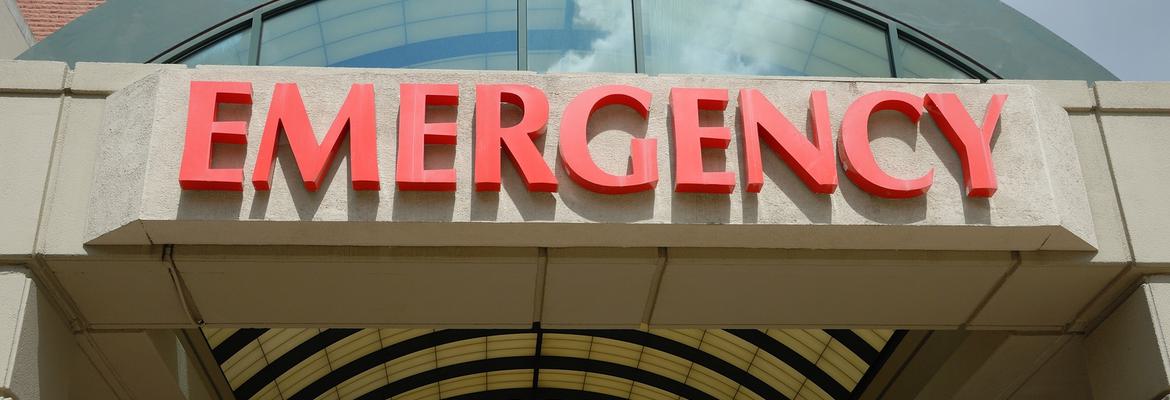Navigating FEMA Assistance for COVID-19 Costs: An FAQ for Hospitals and Healthcare Providers
Brad Gair, Senior Managing Director, Witt O’Brien’s
The Federal Emergency Management Agency (FEMA) has been placed in charge of both distributing hospital funding for COVID-19 patients who are uninsured and providing emergency assistance to hospitals. The Coronavirus Aid, Relief and Economic Security (CARES) Act, provided $45 billion for FEMA’s “entire suite of response and recovery activities and reimbursements provided to states and localities nationwide.”
Below are answers to questions commonly asked by hospital administrators about what COVID-19 costs are eligible and how best to prepare funding applications to maximize reimbursement.
How does FEMA funding differ from other COVID-19 funding alternatives?
There are two important distinctions: FEMA funding can go only to covering increased expenses – it cannot be used to recover lost revenue; and FEMA requires a 25 percent non-federal cost share. Hospitals should review all CARES Act funding possibilities to determine if there is an option that pays the full cost.
What is the first step a hospital should take to request FEMA funding?
Hospitals must first be registered with FEMA and then be given access to the Grants Portal by the state in which they reside in before the hospital can begin submitting claim information.
Will hospitals be tied to the cost estimates they provide in their funding applications or will they be reimbursed for actual documented expenses?
FEMA pays actual eligible costs, so if the estimate is low it can be adjusted based on the actual eligible cost when the grant is reconciled, and if the estimate is high, then the balance of funds are returned to FEMA.
The Emergency Protective Measures (EPM) covers temporary facilities and operating costs incurred for such facilities. What’s defined as a temporary facility?
Temporary facilities don’t simply have to be a temporary structure and refers to any facility that’s utilized on a temporary basis for a surge in need and more importantly, for an immediate threat to lives. Temporary facilities should be suitable for their intended purpose and constructed to local code. If the facility is a purchased modular unit (rather than leased), there could be a salvage/residual value applied when filing for reimbursement.
Are costs to remodel a portion of the hospital to accommodate COVID-19 patients considered eligible?
Yes, the cost to retrofit existing spaces to serve as emergency care facilities for COVID-19 patients are considered eligible for reimbursement. Likewise, the cost to transition the facility back to its pre-event purpose/function would also be considered eligible.
Do the costs associated with drive-thru COVID-19 tests qualify as a temporary facility?
Many of the costs associated with drive-thru COVID-19 testing facilities are considered eligible. Costs for equipment, test swabs, test processing and staff time that is considered eligible overtime, temporary hires or contract labor would be reimbursable.
Can hospitals be reimbursed for the cost of an emergency room visit for patients who do not have insurance but do not qualify for Medicaid because their income is too high?
It depends. Some equipment, medications and staff time associated with treating these patients may be considered eligible if there is no other funding source, however, generally speaking, once an individual is “admitted” to hospital for treatment, insurance takes over to cover these costs. Funding has been rolled out from the U.S. Department of Health & Human Services that may cover these costs, but it does not allow “balance billing.”
Can hospitals be reimbursed for advanced protective measures to prepare for an expected influx of COVID-19 patients?
Most likely. Even if the hospital has fewer numbers of COVID-19 patients than anticipated, the costs to pre-position resources and equipment may be eligible. It is important to document that the measures taken were reasonable and consistent with local, state or national health directives.
What is the best way to ensure that cost documentation meets FEMA requirements?
Capture as much documentation as you can in ‘real time’ to avoid relying on memory or tracking down dated invoices later. Assigning disaster-specific project codes and tracking overtime/temporary hires and contract labor specific to COVID-19 will pay dividends when aggregating costs eligible for reimbursement. Consider the use of standardized Incident Command System (ICS) forms or comparable documents to memorialize notable decisions, track responding resources and gather information that can be utilized to substantiate protective measures were reasonable and prudent at the time they were performed.
What rules apply as it relates to procurement of new contracts for COVID-19 response?
Always make certain you follow your established procurement guidelines, including emergency procurement policies. When enacting new contracts, consider including specific provisions that will cover a broad range of federal funded programs, specifically those outlined in 2CFR 200.100-200.113. A competitive procurement process should be followed whenever possible. If a non-competitive contract is awarded, such as a sole-source contract, and services are required beyond the emergency period, you should perform a competitive procurement for the services once the emergency incident period has ended.
Will childcare expenses for essential employees responding to COVID-19 be covered?
FEMA is reimbursing some childcare costs for frontline workers performing emergency work. Eligible costs are those incurred by the institution or applicant itself, beyond what they normally pay for, and only for those staff supporting eligible emergency work. Documentation will be very important to substantiate need and increased cost burden.
There are other programs in the CARES Act, such as the Coronavirus Relief Fund (CRF), the HHS Provider Relief Fund (PRF), the Community Development Block Grant – CARES (CDBG-CV ) and the Coronavirus Emergency Supplemental Funding Program (DOJ CESF) that may be a better fit for this essential service.
Is the cost of hotel rooms for hospital staff be covered?
FEMA has covered this type of expense in the past, however, in the case of COVID-19, the key to approval is the justification for the expense, such as mitigating the potential for community transmission to the staffs’ household members or general public.
Can straight and overtime pay be reimbursed if charged to COVID-19-specific job codes?
FEMA will reimburse for increased cost burden by the applicant related to responding to the emergency, such as overtime, temporary hires or contract labor that represent an unbudgeted increase in cost burden to the applicant. If you hire temporary or contract employees to perform emergency work or to serve as backfill for re-assigned staff, then all associated pay both straight time and overtime for these individuals will likely be eligible. Hospitals should adhere to existing pre-disaster HR payroll policies and should not create new policies specific to COVID-19 payroll.
Will the cost to restock PPE be covered?
Restocking PPE supplies and commodities are considered eligible for reimbursement when supported by documentation. It’s not imperative you get the restock counts exact, but you should document how the supplies were utilized whenever possible.
Likewise, should a hospital or healthcare provider need to purchase additional PPE as demand increases, these purchase costs would be eligible for FEMA reimbursement. When purchasing PPE for immediate need, future need or restocking, make sure you document the cost of purchase is consistent with the existing market value for the product.
Do additional ventilators and beds for COVID-19 patients count as "first order items” since they will likely last longer than the pandemic?
Yes, with the caveat that FEMA may reduce the amount eligible for reimbursement based on the residual or salvage value of the equipment.
Is the cost of new computers for employees be considered an eligible expense?
The cost of transitioning to remote work, work from home, or tele-health models is only eligible if it directly supports emergency protective measures or emergency work tied to COVID-19 response. It will be important to document how the costs are directly related to the emergency work being performed.
Will the costs associated with any communication to the hospital’s respective communities be reimbursed?
Costs associated with providing communication to the public related to COVID-19 matters that impact life and safety are eligible for reimbursement. Make sure to document how the staff time, equipment, materials or ad placements were used to support this communication objective.
Does FEMA cover the costs associated with hiring an expert consultant to help with their application process?
Yes. FEMA regulations makes available an administrative ‘add-on’ for the increased administrative cost burden of seeking FEMA reimbursement. This add-on can be up to five percent of the total grant amount approved by FEMA and may be used for administrative costs, indirect costs, grant management costs and consultant support. As FEMA is inundated with funding requests, you should consider working with a qualified expert to help you develop a cost recovery strategy by pairing FEMA reimbursements with Medicare, HHS and other related available funding sources.
When does the FEMA funding expire?
No time limit has yet been established by the Trump administration to apply for COVID-19 funding through FEMA but interested providers should act before any such restriction is implemented.

About Brad Gair
Witt O’Brien’s senior expert on emergency response to healthcare crises is available to provide insight and guidance on Covid-19 response and navigating funding from the Federal Emergency Management Agency (FEMA). Brad has more than 25 years of US and international emergency management and homeland security experience and is recognized globally for his leadership during scores of disasters, emergencies and special events, including the 9/11 terrorist attacks in New York City and Hurricane Katrina.
He has twice served the City of New York, first as Deputy Commissioner of NYC Office of Emergency Management and then after Superstorm Sandy, as founding Director of the Mayor's Office of Housing Recovery Operations and NYC Recovery Manager. Brad also served as NYU Langone Health’s first Vice President for Emergency Management and Enterprise Resilience and was responsible for the successful negotiation of the largest FEMA PA grant ever awarded for a single healthcare facility, totaling $1.1 billion for funds related to Hurricane Sandy
